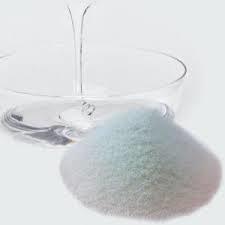They are found naturally, at least in small amounts, in many plants. Plants with large amounts of oligosaccharides include chicory root, from which most commercial inulin is extracted, and so-called Jerusalem artichokes (the root of a member of the sunflower family). They are also found in onions (and the rest of the “onion family”, including leeks and garlic), legumes, wheat, asparagus, jicama, and other plant foods.
It is estimated that North Americans get about 1-3 grams naturally in their diets each day, while Europeans get 3-10 grams. Most oligosaccarides have a mildly sweet taste, and have certain other characteristics, such as the mouthfeel they lend to food, that has drawn the interest of the food industry as a partial substitute for fats and sugars in some foods as well as improved texture. Because of this, more and more of the oligosaccharides in food are synthetically produced. Recent interest has also been drawn to oligosaccarides from the nutritional community because of an important characteristic: the human digestive system has a hard time breaking down many of these carbohydrates. Almost 90% escapes digestion in the small intestine and reaches the colon where it performs a different function: that of a prebiotic.
What Are The Health Benefits of Prebiotics?
The bacteria that feed on fermentable carbohydrate produce many beneficial substances, including short-chain fatty acids (SCFAs) and certain B-vitamins. Additionally, there is some evidence that they may promote further absorption of some minerals that have escaped the small intestine, including calcium and magnesium. The SCFAs probably provide many benefits, both locally in the colon, and in the rest of the body, although the research in this area is quite new. In particular, butyrate has received attention as possibly being protective of colon tissues from damage, including colon cancer and ulcerative colitis. Other possible benefits include:
- lower cholesterol
- lower triglycerides
- improved insulin sensitivity and glucose metabolism
- improved immune system function
Interestingly, different oligosaccharides tend to produce different SCFAs – more reinforcement for eating a variety of foods.
Where Can I Get More Oligosaccharides in my Diet?
In addition to beans and the vegetables listed above, food additives are also a source – inulin and oligofructose are the most common. However, if you don’t eat many of these foods, you can also get the prebiotic benefits of oligosaccharides by getting more fermentable fiber in your diet, including resistant starch. I will be discussing these carbohydrates in the next two sections of this series.
【Reference】
http://lowcarbdiets.about.com/od/nutrition/a/oligosaccharide.htm






